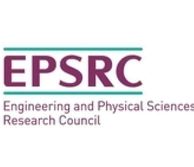Research
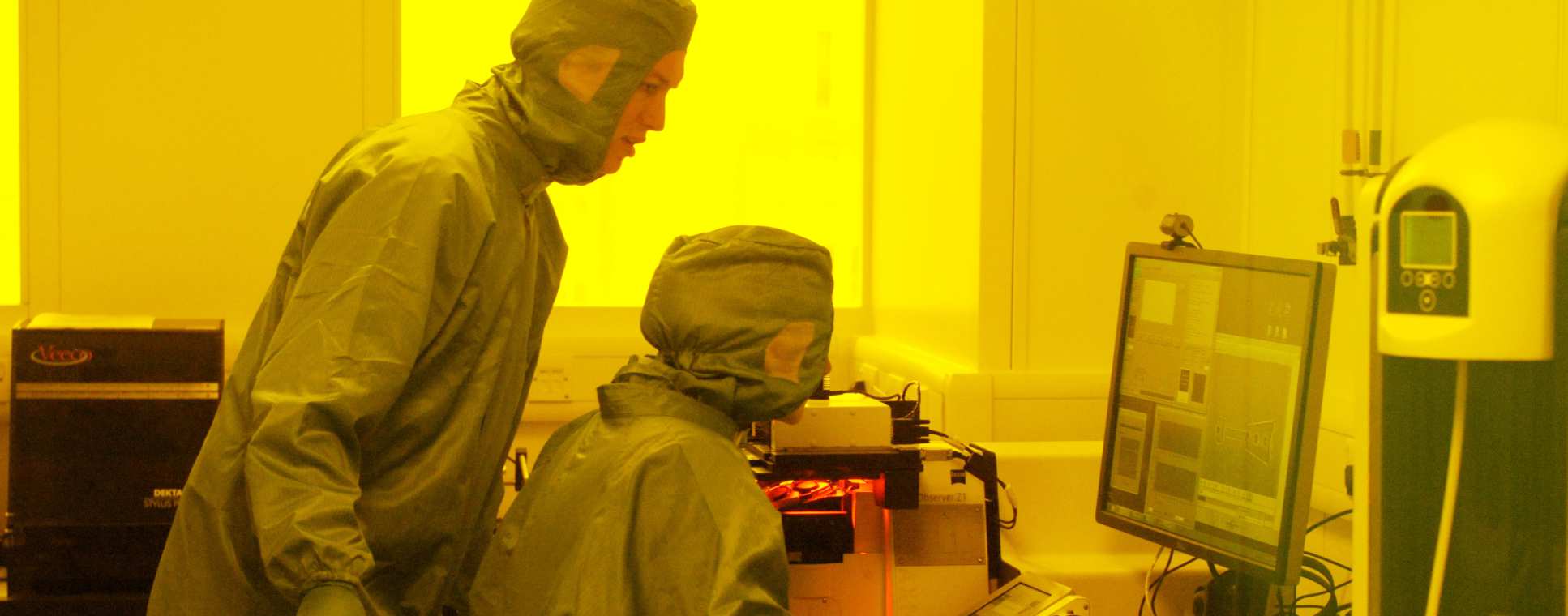
The Hamlyn Centre provides comprehensive research and teaching facilities to deliver high-quality research and clinical applications of imaging, sensing and robotics. It has dedicated research laboratories housed at the engineering campus of Imperial College; large pre-clinical facilities for in-vivo validation; and comprehensive clinical spaces at the Surgical Innovation Centre of Imperial’s St Mary’s Hospital Campus.
The Centre’s research themes are focussed on the following inter-connected areas:
- Medical Robotics – covering neuro-, cardiothoracic-, endovascular-, gastrointestinal-, orthopaedic-, urological- and ENT surgeries, as well as micro-nano robots for targeted drug delivery and therapy. Our research also focuses on the development of novel human-robot interface techniques under the general direction of perceptual docking.
- Pervasive Sensing – engineering developments and clinical applications of wearable and implantable sensors for Body Sensor Networks (see Professor Yang's text on Body Sensor Networks via Springer), as well as underpinning technologies in ultra-low power ASIC design, autonomic sensor networks and light-weight communication protocols.
- Biomedical Imaging and Photonics - developing new techniques for medical imaging (particularly in magnetic resonance imaging) for transforming them from a primarily diagnostic modality towards an interventional and therapeutic platform, facilitated by advances in minimal access and robotic-assisted surgery.
The Hamlyn Centre has three key research focus areas
Research areas
Core Research Groups
Core Research Groups
Research Themes
The research themes of the Hamlyn Centre are focussed on the following inter-connected areas
Review & White Papers
White papers
In the past 5 years, there has been significant changes in technology, regulatory processes, and adoption. Despite several setbacks, driven by a move away from the Medical Devices Directive (MDD) to the more taxing Medical Devices Regulation (MDR), Brexit, and a global pandemic, the sector is now experiencing a second renaissance, with a measurable increase in surgical robotics uptake by industry and hospitals. This steep acceleration has been fuelled by notable large-scale acquisitions of prominent sector innovators, both nationally and internationally, which has helped to energise the community and encouraged disruptive innovations in science and engineering.
After a brief review of noteworthy highlights covering the past ten years, this White Paper summarises the latest achievements in the sector and offers a measured view about the future of surgical robotics in the UK. It also identifies existing translational barriers, followed by a detailed analysis of the country’s Strengths, Weaknesses, Opportunities, and Threats (SWOT) in surgical robotics.
Supported by a far-reaching consultation process with stakeholders from the UK-RAS Network, which began offline and concluded with a workshop focussed on defining a UK Surgical Robotics Roadmap on the 14th of May 2021, the White Paper closes with detailed recommendations related to funding of basic research, supporting translational endeavours, creating shared resources and clusters, attracting a skilled workforce from around the world and fostering international collaborations. These recommendations aim at cementing the UK’s position as a surgical robotics powerhouse and are hoped to influence government, industry, and healthcare providers in their future strategy.
COPD describes a group of lung conditions that make it difficult to empty air out of the lungs because the airways have been narrowed. In the UK alone 1.2 million people live with diagnosed COPD, yet millions of people still remain undiagnosed – the ‘missing millions’ range between 1.8 – 2 million in the UK alone.
The report, 'Implantable and Wearable Medical Devices for Chronic Obstructive Pulmonary Disease', highlights new technologies that have the potential to improve patient lives, from diagnosis, treatment, to rehabilitation.
In the UK, some 7 million people live with cardiovascular disease (an umbrella term that describes all diseases of the heart and circulation) – it’s one of the main causes of death and disability. The healthcare cost of cardiovascular disease totals £9 billion a year in the UK, according to the British Heart Foundation. Patient research is therefore vital to "reap the rewards" of emerging technology in the area of cardiovascular disease.
The report ‘Devices for Endovascular Interventions: Technical advances and translational challenges’ highlights how endovascular intervention (a minimally invasive method for treating cardiovascular diseases via the blood vessels) is playing an increasingly important role in the treatment of patients, yet when it comes to the latest technology “concrete evidence of improving outcomes is the major hurdle for translating new technologies to clinical use.”
Medical robots, whether used for minimally invasive surgery, targeted therapy, emergency response, prosthetics or home assistance, represent one of the fastest growing sectors in the medical devices industry. One of the key areas of medical robotics is the development of surgical robots for minimally invasive surgery and microsurgery.
In this paper, we look back through the last 25 years at how surgical robotics has evolved from a niche research field to a major area of innovation and development. With improved safety, efficacy and reduced costs, robotic platforms will soon approach a tipping point, moving beyond early adopters to become part of the mainstream surgical practice. These platforms will also drive the future of precision surgery, with a greater focus on early intervention and quality of life after treatment. We also project forward, on how this relatively young yet rapidly expanding field may reshape the future of medicine, as well as the associated technical, commercial, regulatory, and economic challenges that need to be overcome.
The 20th century was regarded as the century of extraordinary progress in the physical sciences and engineering. The beginning of the 21st century, which is noted as the bio-era, presents an outstanding opportunity to engineer biological systems using advances in the physical sciences and engineering. Despite significant efforts to develop the knowledge and ability that are essential for addressing biomedical and health problems using engineering methodologies, the optimization of this approach toward engineering the life sciences and healthcare remains a grand challenge.
This paper summarizes the discussions held during the First IEEE Life Sciences Grand Challenges Conference, held on October 4-5, 2012, at the National Academy of Sciences, Washington, DC. Grand challenges were identified by the conference participants in five areas including engineering the brain and nervous system; engineering the cardiovascular system; engineering of cancer diagnostics, therapeutics, and prevention; translation of discoveries to clinical applications; and education and training. A number of these challenges are identified and summarized in this paper.
Review Papers| Sensing
Recent developments in wearable electronics have fueled research into new materials, sensors, and microelectronic technologies for the realization of devices that have increased functionality and performance. This is further enhanced by advances in fabr ication methods and printing techniques, stimulating research on implantables and the advancement of existing medical devices. Our research team provides an overview of new designs, embodiments, fabrication methods, instrumentation, and informatics as well as the challenges in developing and deploying such devices and clinical applications that can benefit from them. The need for and use of these technologies across the perioperative surgical-care pathway are highlighted, along with a vision for the future and how these tools can be adopted by potential end users and health-care systems.
Big data in health is concerned with meaningful datasets that are too big, too fast, and too complex for healthcare providers to process and interpret with existing tools. It is driven by continuing effort in making health services more efficient and sustainable given the demands of a constantly expanding population with an inverted age pyramid, as well as the paradigm shift of delivering health services toward prevention, early intervention, and optimal management.
This paper provides an overview of recent developments in big data in the context of biomedical and health informatics. It outlines the key characteristics of big data and how medical and health informatics, translational bioinformatics, sensor informatics, and imaging informatics will benefit from an integrated approach of piecing together different aspects of personalized information from a diverse range of data sources, both structured and unstructured, covering genomics, proteomics, metabolomics, as well as imaging, clinical diagnosis, and long-term continuous physiological sensing of an individual.
It is expected that recent advances in big data will expand our knowledge for testing new hypotheses about disease management from diagnosis to prevention to personalized treatment. The rise of big data, however, also raises challenges in terms of privacy, security, data ownership, data stewardship, and governance. This paper discusses some of the existing activities and future opportunities related to big data for health, outlining some of the key underlying issues that need to be tackled.
With a massive influx of multimodality data, the role of data analytics in health informatics has grown rapidly in the last decade. This has also prompted increasing interests in the generation of analytical, data driven models based on machine learning in health informatics. Deep learning, a technique with its foundation in artificial neural networks, is emerging in recent years as a powerful tool for machine learning, promising to reshape the future of artificial intelligence.
Rapid improvements in computational power, fast data storage, and parallelization have also contributed to the rapid uptake of the technology in addition to its predictive power and ability to generate automatically optimized high-level features and semantic interpretation from the input data.
This article presents a comprehensive up-to-date review of research employing deep learning in health informatics, providing a critical analysis of the relative merit, and potential pitfalls of the technique as well as its future outlook. The paper mainly focuses on key applications of deep learning in the fields of translational bioinformatics, medical imaging, pervasive sensing, medical informatics, and public health.
Technical advances have supported the evolution of the pervasive health paradigm toward preventative, predictive, personalized, and participatory medicine. This paper discusses the evolution of pervasive healthcare from its inception for activity recognition using wearable sensors to the future of sensing implant deployment and data processing. We provide an overview of some of the past milestones and recent developments, categorized into different generations of pervasive sensing applications for health monitoring.
This is followed by a review on recent technological advances that have allowed unobtrusive continuous sensing combined with diverse technologies to reshape the clinical workflow for both acute and chronic disease management. We discuss the opportunities of pervasive health monitoring through data linkages with other health informatics systems including the mining of health records, clinical trial databases, multiomics data integration, and social media. The sensing technologies discussed in this paper and their future evolution will play a key role in realizing the goal of sustainable healthcare systems.
Understanding the solid biomechanics of the human body is important to the study of structure and function of the body, which can have a range of applications in health care, sport, well-being, and workflow analysis. Conventional laboratory-based biomechanical analysis systems and observation-based tests are designed only to capture brief snapshots of the mechanics of movement.
With recent developments in wearable sensing technologies, biomechanical analysis can be conducted in less-constrained environments, thus allowing continuous monitoring and analysis beyond laboratory settings. In this paper, we review the current research in wearable sensing technologies for biomechanical analysis, focusing on sensing and analytics that enable continuous, long-term monitoring of kinematics and kinetics in a free-living environment.
The main technical challenges, including measurement drift, external interferences, nonlinear sensor properties, sensor placement, and muscle variations, that can affect the accuracy and robustness of existing methods and different methods for reducing the impact of these sources of errors are described in this paper. Recent developments in motion estimation in kinematics, mobile force sensing in kinematics, sensor reduction for electromyography, and the future direction of sensing for biomechanics are also discussed.
The year 2016 marks the 200th birth anniversary of Carl Friedrich Wilhelm Ludwig (1816-1895). As one of the most remarkable scientists, Ludwig invented the kymograph, which for the first time enabled the recording of continuous blood pressure (BP), opening the door to the modern study of physiology.
Almost a century later, intraarterial BP monitoring through an arterial line has been used clinically. Subsequently, arterial tonometry and volume clamp method were developed and applied in continuous BP measurement in a noninvasive way. In the last two decades, additional efforts have been made to transform the method of unobtrusive continuous BP monitoring without the use of a cuff.
This review summarizes the key milestones in continuous BP measurement; that is, kymograph, intraarterial BP monitoring, arterial tonometry, volume clamp method, and cuffless BP technologies. Our emphasis is on recent studies of unobtrusive BP measurements as well as on challenges and future directions.
With the maturity of sensing and pervasive computing techniques, extensive research is being carried out in using different sensing techniques for understanding human behaviour. An introduction to key modalities of pervasive sensing is presented. Behaviour modelling is then highlighted with a focus on probabilistic models. The survey discusses discriminative approaches as well as relevant work on behaviour pattern clustering and variability. The influence of interacting with people and objects in the environment is also discussed. Finally, challenges and new research opportunities are highlighted.
Review Papers| Robotics
Although X-Ray fluoroscopy is currently the gold standard imaging technique for endovascular interventions, it presents occupational safety hazards to medical personnel and potential risks to patients, especially paediatric patients, because of its inherent ionising radiation. On the other hand, MRI (with its unique ability to provide radiation-free imaging, and acquiring morphologic and functional information) holds great promise in the advancement of image-guided navigation through the vasculature and has the potential to combine diagnosis, therapy and early evaluation of therapy in the same intervention. However, MR-guided interventions also face a major challenge due to the presence of a large magnetic field (1.5/3 Tesla), which limits the set of materials suitable for the construction of key instrumentation (sheaths, catheters and guide-wires). Yet, significant progress has been made in the development of interventional devices, which comprise biocompatible, MR safe and MR visible materials.
Our Hamlyn Centre researchers provided a systematic and illustrated review regarding the progress of flexible instruments for endovascular navigation, aiming to encourage and accelerate the development of MR-guided endovascular instrumentation, as well as assist X-Ray & MRI treatments for CVDs. In this review, our researchers 1) first introduced commercial guide-wires and selective catheters, as well as the current state-of-the-art devices used for navigational purposes in endovascular interventions; 2) presented the strengths and limitations of these instruments in terms of navigation in the human vasculature and their accompanied side effects (mainly increased exposure to ionising radiation); 3) reviewed commonly proposed techniques (i.e., steerable catheters and robotic platforms) to overcome the navigational challenges and limitations of performing interventions under X-Ray fluoroscopy guidance; 4) subsequently presented a commonly proposed and investigated route, i.e. adopting MRI as an alternative imaging modality for its unique strength and capabilities when compared to X-Ray fluoroscopy; 5) briefly went through the fundamental physics of MRI, followed by showcasing the ongoing efforts made by academia and industry to develop instruments compatible for use in MR environments through the adoption of different materials and manufacturing methods; 6) outlined MRI's huge potential in combining diagnosis, therapy and early evaluation of therapy in the same intervention; and 7) used this systematic review as a base for defining the future requirements and challenges of developing MR safe and visible instrumentation for endovascular interventions.
Data Availability Statement: The 3D CAD models (Solid-works and STEP files) used in this article are openly available in the fig-share repository: please click Here.
Excessive tool-tissue interaction forces often result in tissue damage and intra-operative complications, while insufficient forces prevent the completion of the task. The measurement of forces applied during surgery at a tool-tissue level thus is an important step in developing solutions to solve the current technical issues occurred during surgery, such as the use of excessive force. Force measurement not only provide a quantitative metric of surgical skills (which potentially useful for surgical training and assessment) but also allow the definition and characterisation of a safe range of forces for specific manoeuvre.
Our Hamlyn-led research team thus provided a PRISMA-guided systematic review, which sought to explore the tool-tissue interaction forces exerted by instruments during surgery across different specialities, tissues, manoeuvres and experience levels (PRISMA: Preferred Reporting Items for Systematic Reviews and Meta-Analyses). In this systematic review, the Hamlyn-led research team highlighted the most recurrent tasks for the top 5 specialities (according to study number). Moreover, the research team also provided the range of forces applied varies according to surgical speciality, tissue, manoeuvre, operator experience and feedback.
In conclusion, 1) in the context of heterogeneous data reporting and study design, neurosurgery, ophthalmology and vascular surgery require the least amount of force, whilst orthopaedic surgery required the most. 2) Accordingly, nervous tissue was the most delicate, whilst connective tissue required more force to manipulate. 3) In general, experts apply less force, and trainees benefit more from force feedback. That is to say, surgeons could use force data to facilitate reflection on technique and highlighting unconscious excessive force use (e.g. with the non-dominant hand whilst retracting tissue). 4) Furthermore, standardised reporting of tool-tissue interactions will facilitate pooled analysis of force safety thresholds and performance metrics. Using these data to assess the effect of human factors on operative performance (e.g. fatigue, personal stress) could further facilitate the development of supportive work environments which optimise surgical care. 5) Lastly, development of novel technology such as smart instruments, robotics and integrated feedback system will facilitate (and might also benefit from) these advancements.
Advances in surgery have revolutionised the management of both acute and chronic diseases, prolonging life and extending the boundary of patient survival. Complex surgical navigation and planning are made possible through the use of both pre- and intraoperative imaging techniques, such as ultrasound, computed tomography (CT), and magnetic resonance imaging (MRI). Owing to recent advances in medicine, artificial intelligence (AI) has played an important role in supporting clinical decision-making since the early years of the development of the MYCIN system. That is to say, AI is gradually changing the practice of surgery with technological advancements in imaging, navigation, and robotic intervention.
AI is now increasingly used for risk stratification, genomics, imaging and diagnosis, precision medicine, and drug discovery. AI was introduced into surgery more recently, with a strong root in imaging and navigation and early techniques focusing on feature detection and computer-assisted intervention for both preoperative planning and intraoperative guidance. Our research team review the recent successful and influential applications of AI in surgery from preoperative planning and intraoperative guidance to its integration into surgical robots. They conclude this review by summarising the current state, emerging trends, and major challenges in the future development of AI in surgery.
The continuing evolution of microelectronics since the 1950s has been the cornerstone of information technology development, enabling seamless information processing, storage and transfer. Many motion-active materials have recently emerged, with new methods of integration into actuator components and systems-on-chip. Along with established microprocessors, interconnectivity capabilities and emerging powering methods, motion-active materials offer a unique opportunity for the development of interactive millimetre and micrometer scale systems with combined sensing and actuating capabilities.
The amplification of nanoscale material motion to a functional range is a key requirement for motion interaction and practical applications, including medical micro-robotics, micro-vehicles and micro-motion energy harvesting. Our researchers at the Hamlyn Centre reviewed the research state-of-art and product availability. The result shows that the available mechanisms offer a motion gain in the range of 10. The limiting factor is the aspect ratio of the moving structure that is achievable in the microscale. Flexures offer high gains because they allow the application of input displacement in the close vicinity of an effective pivotal point.
The combination of high-force piezoelectric stacks or unimorph beams with compliant structure optimisation methods is expected to make available a new class of high-performance motion translators for microsystems as it offers a systematic and reliable design space for addressing the micro-motion requirements of a large range of applications. Motion amplification systems therefore are expected to play a central role in the enabling of millimeter and micrometer scale actuating, robotic, sensing as well as energy systems.
One of the ambitions of Science Robotics is to deeply root robotics research in science while developing novel robotic platforms that will enable new scientific discoveries. On the basis of the feedback and submissions received from the open online survey we conducted, 10 grand challenges may have major breakthroughs, significant research, and/or socioeconomic impact in the next 5 to 10 years.
Of our 10 grand challenges, the first 7 represent underpinning technologies that have a wider impact on all application areas of robotics. For the next two challenges, we have included social robotics and medical robotics as application-specific areas of development to highlight the substantial societal and health impacts that they will bring. Finally, the last challenge is related to responsible innovation and how ethics and security should be carefully considered as we develop the technology further.
Medical robotics is poised to transform all aspects of medicine—from surgical intervention to targeted therapy, rehabilitation, and hospital automation. A key area is the development of robots for minimally invasive interventions. This review provides a detailed analysis of the evolution of interventional robots and discusses how the integration of imaging, sensing, and robotics can influence the patient care pathway toward precision intervention and patient-specific treatment.
It outlines how closer coupling of perception, decision, and action can lead to enhanced dexterity, greater precision, and reduced invasiveness. It provides a critical analysis of some of the key interventional robot platforms developed over the years and their relative merit and intrinsic limitations. The review also presents a future outlook for robotic interventions and emerging trends in making them easier to use, lightweight, ergonomic, and intelligent, and thus smarter, safer, and more accessible for clinical use.
From minimally invasive surgery, targeted therapy, and hospital optimization to emergency response, prosthetics, and home assistance, medical robotics represents one of the fastest growing sectors in the medical devices industry. The regulatory, ethical, and legal barriers imposed on medical robots necessitate careful consideration of different levels of autonomy, as well as the context for use. For autonomous vehicles, levels of automation for on-road vehicles are defined, yet no such definitions exist for medical robots.
In this paper, we propose six levels of autonomy for medical robotics as one possible framework to stimulate discussions. As technology may advance faster than regulatory, ethical, and legal frameworks, risk management during implementation is critical to avoid backlash that would impede progress. The robotic devices are essentially doing what the physician commands, with varying levels of detail being left to the automated system. Aside from evolving technology, the risk tolerance to autonomous robots is expected to change. As autonomous machines such as self-driving cars become commonplace, we anticipate that acceptance of risk from autonomous robots for medical applications will also increase.
Within only a few decades from its initial introduction, the field of surgical robotics has evolved into a dynamic and rapidly growing research area with increasing clinical uptake worldwide. Initially introduced for stereotaxic neurosurgery, surgical robots are now involved in an increasing number of procedures, demonstrating their practical clinical potential while propelling further advances in surgical innovations. Emerging platforms are also able to perform complex interventions through only a single-entry incision, and navigate through natural anatomical pathways in a tethered or wireless fashion.
New devices facilitate superhuman dexterity and enable the performance of surgical steps that are otherwise impossible. They also allow seamless integration of microimaging techniques at the cellular level, significantly expanding the capabilities of surgeons. This paper provides an overview of the significant achievements in surgical robotics and identifies the current trends and future research directions of the field in making surgical robots safer, smaller, and smarter.
Endovascular techniques have been embraced as a minimally-invasive treatment approach within different disciplines of interventional radiology and cardiology. The current practice of endovascular procedures, however, is limited by a number of factors including exposure to high doses of X-ray radiation, limited 3D imaging, and lack of contact force sensing from the endovascular tools and the vascular anatomy.
More recently, advances in steerable catheters and development of master/slave robots have aimed to improve these practices by removing the operator from the radiation source and increasing the precision and stability of catheter motion with added degrees-of-freedom. Despite their increased application and a growing research interest in this area, many such systems have been designed without considering the natural manipulation skills and ergonomic preferences of the operators. Existing studies on tool interactions and natural manipulation skills of the operators are limited.
In this manuscript, new technical developments in different aspects of robotic endovascular intervention including catheter instrumentation, intra-operative imaging and navigation techniques, as well as master/slave based robotic catheterization platforms are reviewed. We further address emerging trends and new research opportunities towards more widespread clinical acceptance of robotically assisted endovascular technologies.
Recent technological advances in surgery have resulted in the development of a range of new techniques that have reduced patient trauma, shortened hospitalization, and improved diagnostic accuracy and therapeutic outcome. Despite the many appreciated benefits of minimally invasive surgery (MIS) compared to traditional approaches, there are still significant drawbacks associated with conventional MIS including poor instrument control and ergonomics caused by rigid instrumentation and its associated fulcrum effect.
The use of robot assistance has helped to realize the full potential of MIS with improved consistency, safety and accuracy. The development of articulated, precision tools to enhance the surgeon's dexterity has evolved in parallel with advances in imaging and human-robot interaction. This has improved hand-eye coordination and manual precision down to micron scales, with the capability of navigating through complex anatomical pathways.
In this review paper, clinical requirements and technical challenges related to the design of robotic platforms for flexible access surgery are discussed. Allied technical approaches and engineering challenges related to instrument design, intraoperative guidance, and intelligent human-robot interaction are reviewed. We also highlight emerging designs and research opportunities in the field by assessing the current limitations and open technical challenges for the wider clinical uptake of robotic platforms in MIS.
Medical robots have evolved from autonomous systems to tele-operated platforms and mechanically-grounded, cooperatively-controlled robots. Whilst these approaches have seen both commercial and clinical success, uptake of these robots remains moderate because of their high cost, large physical footprint and long setup times. More recently, researchers have moved toward developing hand-held robots that are completely ungrounded and manipulated by surgeons in free space, in a similar manner to how conventional instruments are handled. These devices provide specific functions that assist the surgeon in accomplishing tasks that are otherwise challenging with manual manipulation.
Hand-held robots have the advantages of being compact and easily integrated into the normal surgical workflow since there is typically little or no setup time. Hand-held devices can also have a significantly reduced cost to healthcare providers as they do not necessitate the complex, multi degree-of-freedom linkages that grounded robots require. However, the development of such devices is faced with many technical challenges, including miniaturization, cost and sterility, control stability, inertial and gravity compensation and robust instrument tracking. This review presents the emerging technical trends in hand-held medical robots and future development opportunities for promoting their wider clinical uptake.
Review Papers| Imaging
When light is incident to a biological tissue surface, combinations of optical processes occur, such as reflection, absorption, elastic and non-elastic scattering, and fluorescence. Analysis of these light interactions with the tissue provides insight into the metabolic and pathological state of the tissue. Furthermore, in-vivo diagnosis of diseases using optical spectroscopy enables in-situ rapid clinical decisions without invasive biopsies. For in-vivo scenarios, incident light can be delivered in a highly localised manner to tissue via optical fibres, which are placed within the working channels of minimally invasive clinical tools, such as endoscopes.
In the review, several types of point-based optical spectroscopy techniques (elastic optical scattering spectroscopy, fluorescence spectroscopy, Raman spectroscopy, and multimodal spectroscopy) for the diagnosis and monitoring of diseases states of tissue in an in-vivo setting are introduced and explored. Examples of the latest and most impactful works for each technique were then critically reviewed by our researchers at the Hamlyn Centre.
In the conclusion of this review paper, our researchers not only addressed current challenges and unmet clinical needs, but also future opportunities, such as point-based spectroscopies for robot-guided surgical interventions. This timely Topical Review will be considerably useful for biomedical engineers and clinicians with an interest in optical diagnosis and will contribute to the discussion on the current and future directions of the field of optical spectroscopic in-vivo diagnosis.
- The potential role of optical biopsy in the study and diagnosis of environmental enteric dysfunction
Environmental enteric dysfunction (EED) is a disease of the small intestine affecting children and adults in low and middle income countries. Arising as a consequence of repeated infections, gut inflammation results in impaired intestinal absorptive and barrier function, leading to poor nutrient uptake and ultimately to stunting and other developmental limitations.
Progress towards new biomarkers and interventions for EED is hampered by the practical and ethical difficulties of cross-validation with the gold standard of biopsy and histology. Optical biopsy techniques — which can provide minimally invasive or noninvasive alternatives to biopsy — could offer other routes to validation and could potentially be used as point-of-care tests among the general population.
This Consensus Statement identifies and reviews the most promising candidate optical biopsy technologies for applications in EED, critically assesses them against criteria identified for successful deployment in developing world settings, and proposes further lines of enquiry. Importantly, many of the techniques discussed could also be adapted to monitor the impaired intestinal barrier in other settings such as IBD, autoimmune enteropathies, coeliac disease, graft-versus-host disease, small intestinal transplantation or critical care.
Recent advances in surgical robotics have provided a platform for extending the current capabilities of minimally invasive surgery by incorporating both preoperative and intraoperative imaging data.
In this tutorial article, we introduce techniques for in vivo three-dimensional (3-D) tissue deformation recovery and tracking based on laparoscopic or endoscopic images. These optically based techniques provide a unique opportunity for recovering surface deformation of the soft tissue without the need of additional instrumentation. They can therefore be easily incorporated into the existing surgical workflow. Technically, the problem formulation is challenging due to nonrigid deformation of the tissue and instrument interaction.
Current approaches and future research directions in terms of intraoperative planning and adaptive surgical navigation are explained in detail.
- Investigating intrinsic myocardial mechanics: The role of MR tagging, velocity phase mapping, and diffusion imaging
Heart disease remains the biggest killer in the Western world. It also causes considerable morbidity and, when associated with heart failure, has a very poor prognosis. Assessment of myocardial mechanics is an integral part of understanding and predicting heart disease. This review covers the two most common magnetic resonance (MR) methods used to measure myocardial motion: myocardial tagging and myocardial velocity mapping.
Myocardial tagging has been well established in clinical research, despite its time‐consuming postprocessing procedure. Myocardial velocity mapping uses the phase shifts of the spins to encode the velocity into the MR signal. This means that once the myocardial contours have been segmented, the data can be automatically processed to obtain quantitative measurements. Diffusion MR also has found applications in cardiac imaging, with preliminary results of myocardial fiber architecture being obtained recently.
These three different MR techniques have provided valuable insights into the assessment of intrinsic cardiac mechanics.
Heart failure due to coronary artery disease has considerable morbidity and poor prognosis. An understanding of the underlying mechanics governing myocardial contraction is a prerequisite for interpreting and predicting changes induced by heart disease. Gross changes in contractile behaviour of the myocardium are readily detected with existing techniques. For more subtle changes during early stages of cardiac dysfunction, however, a sensitive method for measuring, as well as a precise criterion for quantifying, normal and impaired myocardial function is required.
The purpose of this paper is to outline the role of imaging, particularly cardiovascular magnetic resonance (CMR), for investigating the fundamental relationships between cardiac morphology, function and flow. CMR is emerging as an important clinical tool owing to its safety, versatility and the high-quality images it produces that allow accurate and reproducible quantification of cardiac structure and function.
We demonstrate how morphological and functional assessment of the heart can be achieved by CMR and illustrate how blood flow imaging can be used to study flow and structure interaction, particularly for elucidating the underlying haemodynamic significance of directional changes and asymmetries of the cardiac looping. Future outlook on combining imaging with engineering approaches in subject-specific biomechanical simulation is also provided.
Extensive research into the role of saccadic eye movements in human visual perception has been carried out for many years. Although the search patterns of different observers while studying the same image bear some common characteristics, there are often variations in the temporal order in which fixation points are viewed. During visual search for a defined target, there is evidence for both parallel search, with which all objects are processed concurrently, and for sequential search, in which several fixation points are found leading to the target.
In this article, we present a review of both theoretical and experimental research directed towards better understanding of the underlying mechanisms of visual search. We begin by looking at the basic dynamics of saccadic eye movements and some of the major psychophysical models that have been developed over the years. An overview of the practical applications and future trends of visual search is then provided. Visual search is a common task that people perform throughout their daily life, and the number of applications inspired by the human visual search mechanism is potentially large.
The purpose of this paper is to highlight some of the key opportunities for the image and vision computing community and promote further interactions between biological and computational vision research.
Over the last two decades, two‐dimensional electrophoresis (2‐DE) gel has established itself as the de facto approach to separating proteins from cell and tissue samples. Due to the sheer volume of data and its experimental geometric and expression uncertainties, quantitative analysis of these data with image processing and modelling has become an actively pursued research topic. The results of these analyses include accurate protein quantification, isoelectric point and relative molecular mass estimation, and the detection of differential expression between samples run on different gels.
Systematic errors such as current leakage and regional expression inhomogeneities are corrected for, followed by each protein spot in the gel being segmented and modelled for quantification. To assess differential expression of protein spots in different samples run on a series of two‐dimensional gels, a number of image registration techniques for correcting geometric distortion have been proposed.
This paper provides a comprehensive review of the computation techniques used in the analysis of 2‐DE gels, together with a discussion of current and future trends in large scale analysis. We examine the pitfalls of existing techniques and highlight some of the key areas that need to be developed in the coming years, especially those related to statistical approaches based on multiple gel runs and image mining techniques through the use of parallel processing based on cluster computing and the grid technology.
Books
Neurosurgical interventions carry an intrinsic risk of morbidity and mortality. The physical structure of the human brain is extremely complex and often challenging to navigate. Furthermore, neuro- vascular tissue is exquisitely prone to injury and has limited capacity for regeneration. To work in a safe and effective manner, neurosur- geons must operate with precision and delicateness. Nonetheless, there are inherent limitations to the precision with which a human surgeon can operate; and herein lies the opportunity for robotics.
This chapter reviews shared-control robots, a class of robotic device in which the surgeon and the robot simultaneously manipulate the surgical tool together. The shared-control approach seeks to exploit the superior aspects of humans and machines, to enable more precise interventions while ensuring the human surgeon retains executive control. Much of the technology discussed in this chapter is emerging research and many of the described systems have been developed for generic microsurgical interventions. Nonetheless, the broad concepts behind these surgical systems are highly applicable to neurosurgery and particularly to microsurgical procedures.
The authors start by presenting an exemplar of a grounded, shared-control robot: the Steady-Hand system, following by reviewing a series of handheld smart surgical devices, including Micron, a handheld tremor cancellation device. This chapter also presents handheld devices capable of augmenting haptic feedback to surgeons performing delicate neurosurgical tasks, image-guided handheld devices with embedded robotic actuation, and a new generation of handheld microscopic imaging devices for visualizing tumors.
Ch2: From Wearables to Implantables – Clinical Drive & Technical Challenges
The pervasiveness of electronic devices into everyday life has become a reality. Advancements in microfabrication and material science are daily translated into devices with a direct positive impact on the livelihood of individuals and entire societies. This is further accelerated by advances in information technologies. Objects used daily are becoming increasingly intelligent and interconnected (the Internet of Things [IoT]) with vast amounts of data being generated.
Myriads of wearable gadgets with wireless (most often Bluetooth or Bluetooth low energy) connectivity are available with motion, electrocardiography (ECG), electromyography (EMG), photoplethysmography (PPG), electroencephalography (EEG), near-infrared spectroscopy, bioimpedance, and other sensing capabilities. While most of these are intended for sports enthusiasts and activity/fitness tracking, there are extensive efforts in transforming them into clinically valuable tools for the decentralization of health care systems and at-home monitoring of the increasingly aging population.
The field of body sensor networks (BSN) plays an important role in these developments. In parallel, implantable devices are also evolving. The development of wearable and implantable devices is driven by the particular needs of each application. In this chapter, the field of musculoskeletal orthopedic applications is used as an exemplar to introduce wearables and implantables, their needs and challenges in their deployment, and various technologies proposed for sensing, to provide an introduction to subsequent chapters in this book.
Ch10: Power & Data Communication in Wearable & Implantable Devices
Wearable and implantable devices ideally should require low levels of maintenance and be able to operate continuously throughout the intended device lifetime with minimal disruption and human interference. The need for additional surgical procedures to address the energy needs of implanted devices (eg, replace batteries) can be detrimental in their adoption. Most wearable and implantable devices require a powering source to operate. When the device needs to perform complex tasks, active devices are needed to perform, for example, multiplexing, signal acquisition, and processing. In these cases, which account for the majority of wearables and implantables, a stable, reliable power supply is needed during operation, which may be continuous, periodic, or event-driven.
In this chapter, methods for powering such devices, are examined together with wireless communication methods and security, since in many cases these are inseparable. Energy scavenging will also be briefly discussed. With such technologies, the power management unit is crucial for maximizing and regulating the power supply and an efficient charging protocol will maximize the lifetime of the energy storage device. The characteristics of each energy source are different, and each can be affected by different parameters, such as weather and illumination conditions (eg, solar energy), distance [radiofrequency (RF) and inductive powering], activity (biomechanical), metabolism, and homeostasis (biochemical). Similarly to our other chapter in this book, we use the case of orthopedic applications as the basis of some of the discussions in this chapter.
Implantable sensing, whether used for transient or long-term monitoring of in vivo physiological, bio-electrical, bio-chemical and metabolic changes, is a rapidly advancing field of research and development. Underpinned by increasingly small, smart and energy efficient designs, they become an integral part of surgical prostheses or implants for both acute and chronic conditions, supporting optimised, context aware sensing, feedback, or stimulation with due consideration of system level impact.
From sensor design, fabrication, on-node processing with application specific integrated circuits, to power optimisation, wireless data paths and security, this book provides a detailed explanation of both the theories and practical considerations of developing novel implantable sensors. Other topics covered by the book include sensor embodiment and flexible electronics, implantable optical sensors and power harvesting.
'Implantable Sensors and Systems – from Theory to Practice' is an important reference for those working in the field of medical devices. The structure of the book is carefully prepared so that it can also be used as an introductory reference for those about to enter into this exciting research and developing field.
The last decade has witnessed a rapid surge of interest in new sensing and monitoring devices for wellbeing and healthcare. One key development in this area is wireless, wearable and implantable in vivo monitoring and intervention. A myriad of platforms are now available from both academic institutions and commercial organisations. They permit the management of patients with both acute and chronic symptoms, including diabetes, cardiovascular diseases, treatment of epilepsy and other debilitating neurological disorders. Despite extensive developments in sensing technologies, there are significant research issues related to system integration, sensor miniaturisation, low-power sensor interface, wireless telemetry and signal processing.
In this 'Body Sensor Networks (BSN)' book, major topics related to the latest technological developments and potential clinical applications are discussed, with contents covering.
- Biosensor Design, Interfacing and Nanotechnology
- Wireless Communication and Network Topologies
- Communication Protocols and Standards
- Energy Harvesting and Power Delivery
- Ultra-low Power Bio-inspired Processing
- Multi-sensor Fusion and Context Aware Sensing
- Autonomic Sensing
- Wearable, Ingestible Sensor Integration and Exemplar Applications
- System Integration and Wireless Sensor Microsystems
The book also provides a comprehensive review of the current wireless sensor development platforms and a step-by-step guide to developing your own BSN applications through the use of the BSN development kit.
Current Active Grants
EPSRC
Award Funder: Engineering & Physical Science Research Council (EPSRC)
- EP/P012779/1 | Programme Grant: Micro-Robotics for Surgery
- EP/S025669/1 | EPSRC UK Robotics and Autonomous Systems (UK-RAS) Network
- EP/N024877/1 | Robot Assisted Endovascular Intervention: Device Design and Innovation
- EP/R004153/1 | Multispectral polarization-resolved endoscopy and vision for intraoperative imaging of tissue microstructure and function
- EP/R026092/1 | Future AI and Robotics Hub for Space (FAIR-SPACE)
NIHR
Award Funder: National Institute for Health Research (NIHR)
The Royal Society
Award Funder: The Royal Society
- UF140290 | NEURO - RS Fellowship | Dr Stamatia Giannarou
- RGF\EA\180084 | Research Fellows Enhancement Award 2017 - "From Macro to Micro: Mixed Reality Visualisation Across Scales" | Dr Stamatia Giannarou
Bill & Melinda Gates Foundation
Award Funder: Bill & Melinda Gates Foundation
- OPP1171395 | An Innovative Passive Dietary Monitoring System
European Commission | DFG
Award Funder: European Commission (EC)
- 730994 - INFRAIA-2016-2017 | TERRINet [H2020 RIA] -The European Robotics Research Infrastructure Network
Award Funder: Deutsche Forschungsgemeinschaft (DFG) - German Research Foundation
Wellcome Trust | British Council
Award Funder: Wellcome Trust
- 208857/Z/17/Z | Institutional Translation Partnership Award: Robotic Surgery
Award Funder: British Council (UK)
- 330760239 | An Intelligent Sensing System | Dr Benny Lo
Grant Funders of the Hamlyn Centre
Current Active Grant Funders



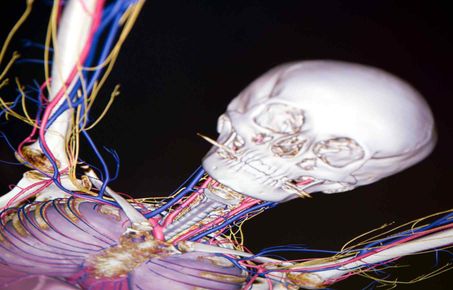
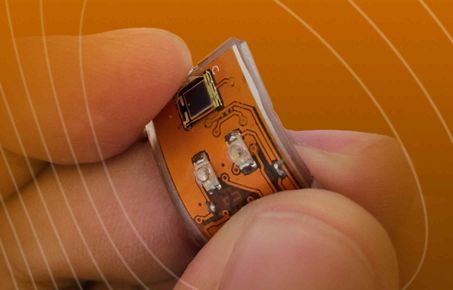
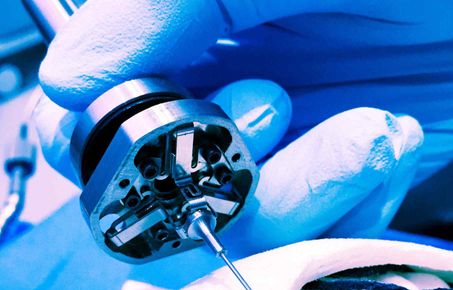
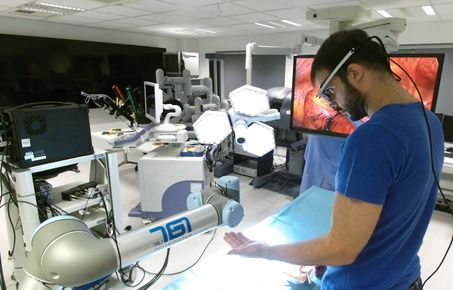
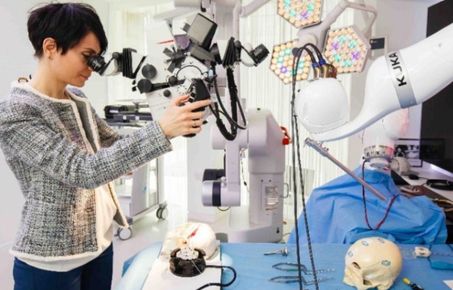
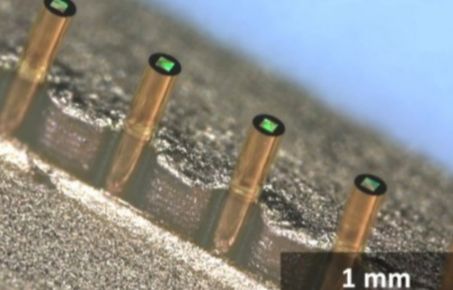
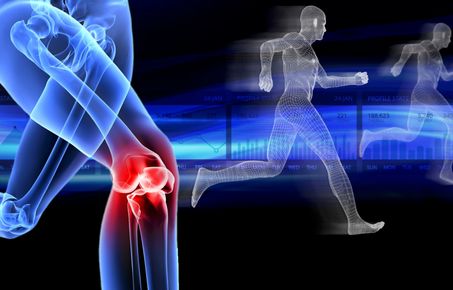
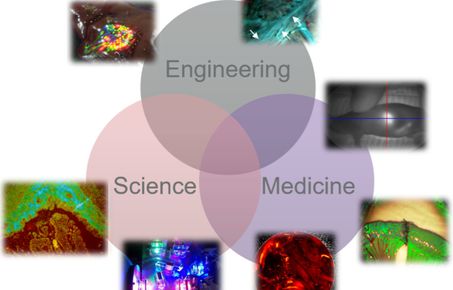
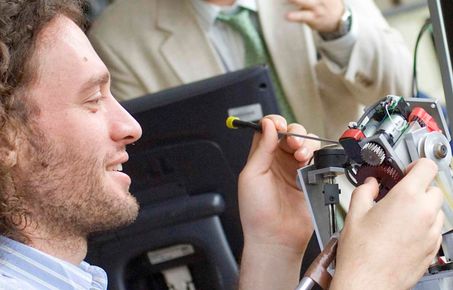

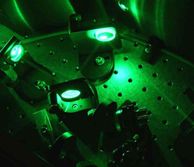
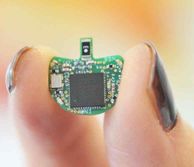
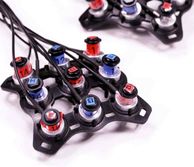
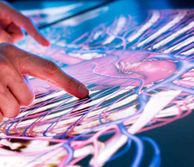
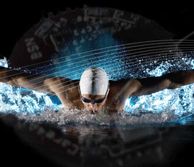
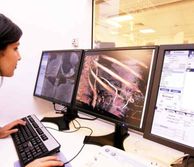
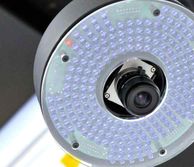
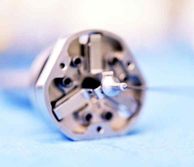
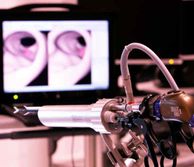
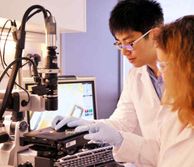
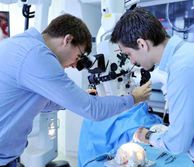


--tojpeg_1537451756360_x4.jpg)
